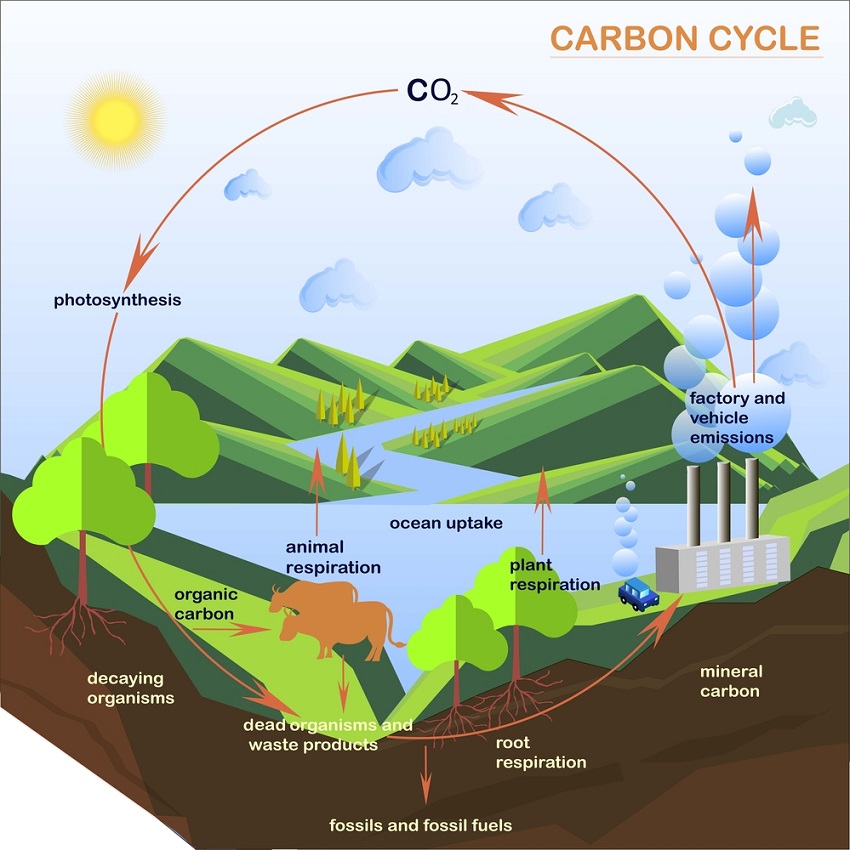Carbon Cycle
The carbon cycle is the way carbon (iv) oxide is being used from the atmosphere by photosynthesis and put back into the atmosphere by respiration and decay. The carbon cycle involves the following processes Photosynthesis, Respiration, Putrefaction and Combustion. Only photosynthesis removes carbon (iv) oxide from the atmosphere, the other three processes return carbon (iv) oxide to the atmosphere
- Photosynthesis: The air contains carbon (iv) oxide which diffuses into the leaves and it built up into sugar and other complex compound. When the plant is eaten by animal, sugar gets into the cells in the animals body.
- Respiration: Within the animal body when the chemical food substance is broken down, it releases carbon (iv) oxide, water and energy. The carbon (iv) oxide is released to the atmosphere.
- Putrefaction: When animals and plants die, they decay. In the process of decay, bacteria and other microbes feed on them. The bacteria and other microbes too respire therefore returning C02 back to the atmosphere
- Combustion: carbon (iv) oxide is also released into the atmosphere when fuels such as coal, wood, petrol, kerosene are burned
- From the sea: Where there is little quantity of carbon (iv) oxide in the atmosphere, more is liberated from the seas. Conversely when there is too much carbon (iv) oxide in the atmosphere, more dissolve in the sea
Importance of Carbon cycle
- All living things are made up of carbon component
- All food components contain carbon in item
iii. The process produces carbon (iv) oxide for the use of photosynthesis
- The process maintain carbon oxygen balance in the atmosphere

Read our disclaimer.
AD: Take Free online baptism course: Preachi.com 